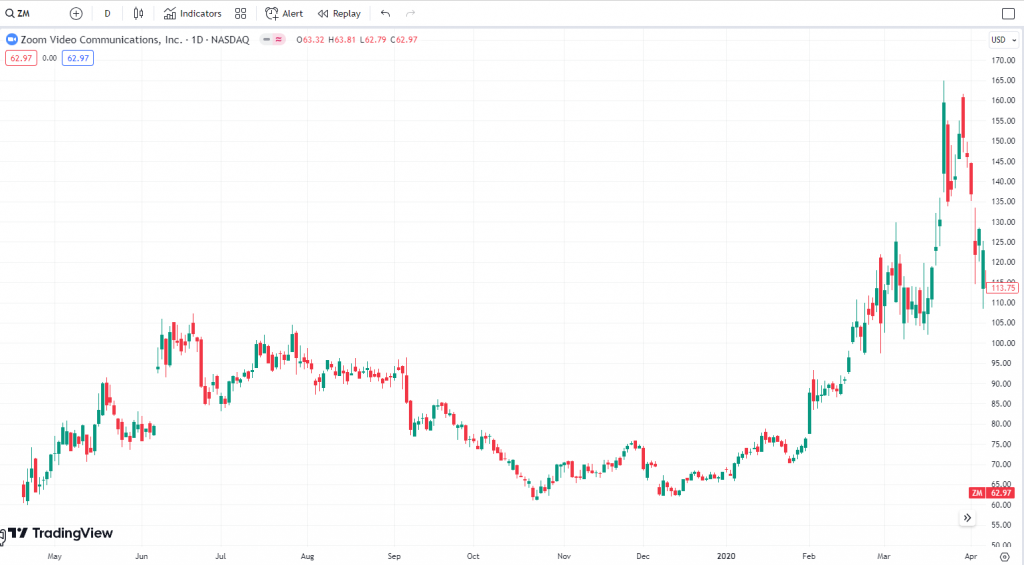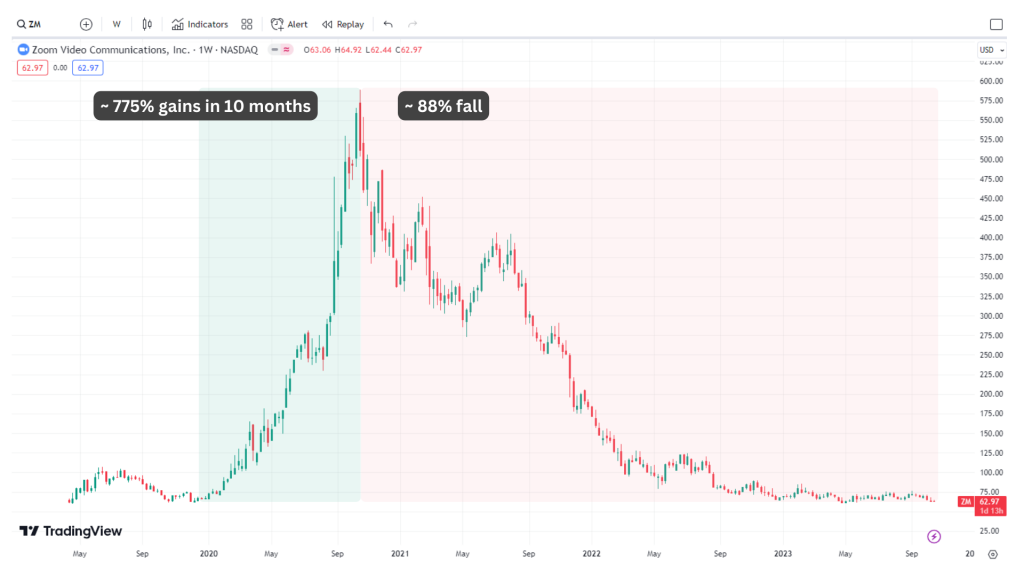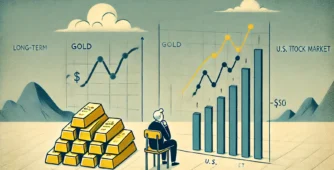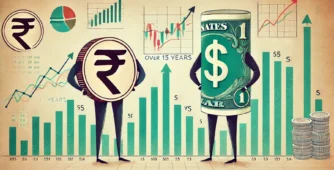The Rollercoaster Ride of Zoom Stock
As the COVID-19 pandemic hit and the world shifted towards remote work and virtual meetings, Zoom became a household name and the go-to platform for video communication. However, like any rollercoaster ride, Zoom’s stock price experienced dramatic highs and lows, leaving investors questioning their decision-making and the issues around timing the market. In this article, we will examine the trajectory of Zoom’s stock price and explore the valuable lessons it offers for investors.
Back in the pre-COVID era, when Zoom was still a rising star but not yet a household name, its stock price stood at a respectable $60 per share. Little did investors know that the pandemic would propel Zoom’s popularity to meteoric heights, and its stock price along with it. As the crisis unfolded and remote work became the new norm, Zoom soared to $155 within a matter of months. The market sentiment was optimistic, and investors held on to their positions, anticipating even greater gains.

But just as quickly as it rose, Zoom’s stock price experienced a sharp correction. From the peak of $155, it dropped back down to $100. This volatility left many investors wondering if it was time to exit their positions or hold on for further gains. Little did they know that Zoom still had surprises in store.
Zoom defied expectations once again, embarking on a staggering climb that seemed unstoppable. From $100, it surged to nearly $600, making many investors who held on from the initial $60 investment extremely wealthy. However, this incredible rise was not without its limitations. Zoom’s stock eventually retreated to its starting point, hitting $60 again.

So, what can we learn from this rollercoaster ride of Zoom’s stock price and the hindsight analysis that follows ?
Hindsight is always 20-20 & you will most probably see things very clearly after the event is done. It is easy to say, “If only I had known back then, I would have sold at the peak and bought back at the bottom.” But the real game is more nuanced and complex than that.
Successful investing requires a systematic approach with proper risk management, and decision-making. It is essential to devise a strategy for selecting and exiting investments, understanding when to book profits and when to cut losses. Every trade does not need to be profitable, and every loss is not necessarily a bad one. What matters is having a clear plan and sticking to it.
Consider the example of an investor who purchased Zoom stock at $60 and decided to sell at $400, even though the stock eventually reached $600. While they missed out on potential gains, they still made a substantial profit of six and a half times their initial investment within a year. Additionally, they protected their capital from the subsequent collapse in Zoom’s stock price and potentially reinvested it in other lucrative opportunities.
This example demonstrates the importance of being proactive rather than reactive. Timing the market perfectly is nearly impossible, and waiting for that one elusive peak can result in missed opportunities and unnecessary risks.
Investing should be approached with a forward-thinking mindset. Rather than regretting missed opportunities or dwelling on past decisions, investors should focus on what is currently happening and strategize accordingly.
As we reflect on the rollercoaster ride of Zoom’s stock price, it is crucial to understand that investing is a journey filled with ups and downs. Markets are inherently volatile, and there will always be unforeseen events that impact stock prices. What matters most is having a robust rule based investment plan combined with adequate risk management measures rather than allowing emotions to take centerstage.

If you have any questions, please write to support@weekendinvesting.com









